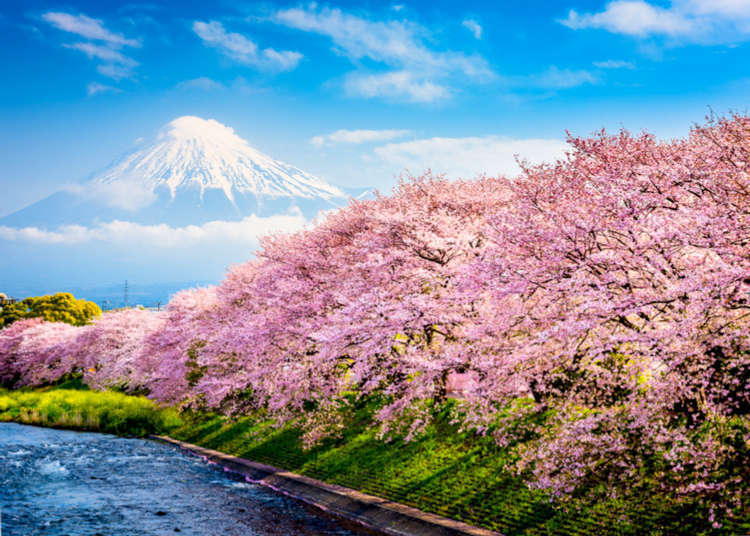
The Best Time of Year To Visit? 15 Reasons We Love Spring in Japan!
- Written by: David McElhinney
In Japan the segue from one season to another often brings about notable and drastic changes. As the frigid winter comes to a close it paves the way for spring ushering in one of the finest times of year to step foot on Japanese shores.
With spring comes a beautifully temperate climate, the natural wonder that is the Japanese cherry blossom and a welcome return to the festival and hiking seasons. Plus, there's simply no better time to indulge in some juicy Japanese strawberries! To sum up, we love spring in Japan and here are 15 reasons why.
1. Cherry Blossom season
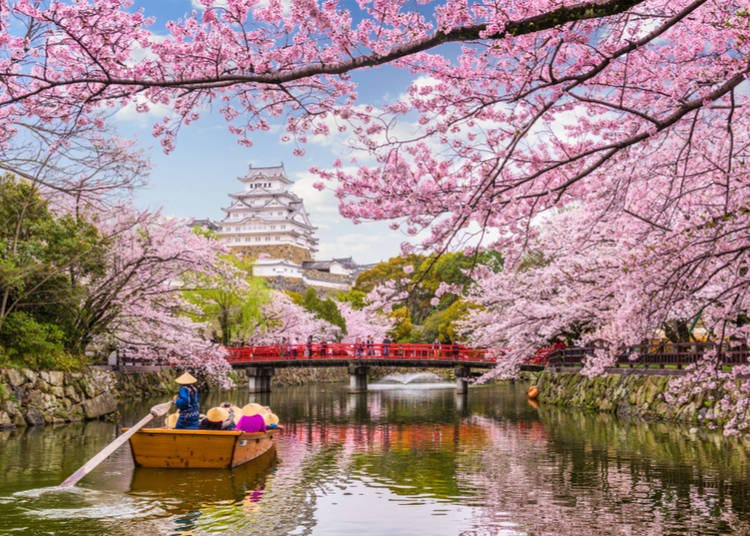
“Light as feathers, as fleeting as Zephyr, one moment they breathed pink, the next they faded. Cherry blossoms were as much an inspiration for beautiful verse as they were a reminder of life's fickleness, she thought.” (From The Green Phoenix by Alice Poon).
Cherry blossoms almost need no introduction at this stage, however, the preceding quote from Alice Poon's novel sums them up quite beautifully. You could make the argument that no other plant on this planet has inspired as much poetry, philosophical thought and wonder as the Japanese cherry blossom (or sakura in the native tongue). Their annual appearance is short enough that it almost seems ephemeral, yet it stills attracts tourists from all corners of the globe. It is the number one reason that spring is such a popular time for the Japanese tourism industry.
The sakura tend to appear over a two-week period (1 week to bloom, followed by another week in which they slowly drift away). The dates vary although usually in Tokyo they will appear towards the end of March.
Depending on where you are in the country these dates will vary—in Kyushu they will appear earlier whilst in northern Honshu and Hokkaido you will catch them a little later. There are also certain areas – such as Atami, near Tokyo – where you can catch an early preview of the pink blossoms in early February.
Hot tip: View cherry blossoms at night!
2. Visiting Japanese flower gardens
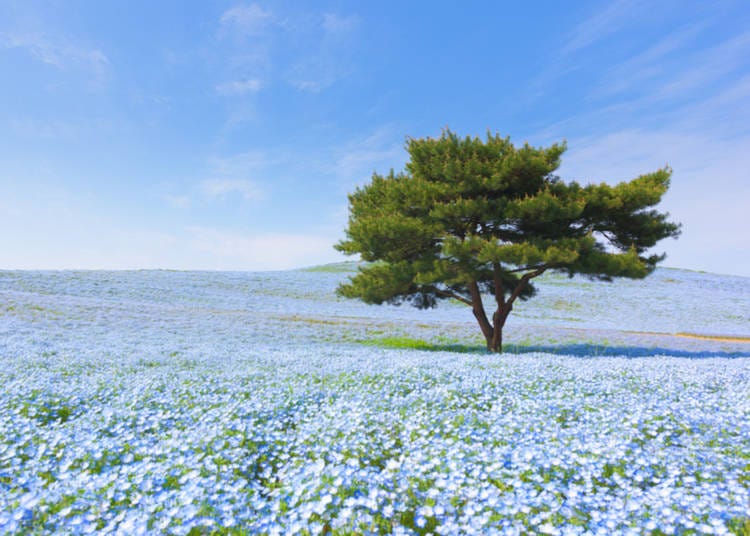
Don't worry if your trip doesn't coincide with cherry blossom season, there is still an abundance of vibrant native flowers beyond the cherries which come into bloom during the spring!
Nemophila
Nemophila are crystal blue flowers that appear in vast numbers across parks and fields in Japan. In Ibaraki just north of Tokyo you can view a literal sea of nemophila every spring.
Moss Phlox
Moss phlox flowers bloom at the beginning of late April and remain that way right through the rest of the season. In Higashimokoto Park in Hokkaido they carpet the grass in dense electric pink foliage. The Fuji Shibazakura festival at the fount of the eponymous mountain also pays homage to this genus of flora in all its natural splendor.
Violets
Violets are a common spring flower worldwide and in Japan that is no different. They sprout in parks, in gardens and in any crevice that will take them. They are easy to spot as a result of the arresting color that is indeed their namesake.
Camellias
Camellias are spring flowers commonly used in Japanese art. Their beauty is a result of a natural reddish-orange sheen.
3. Perfect Temperature
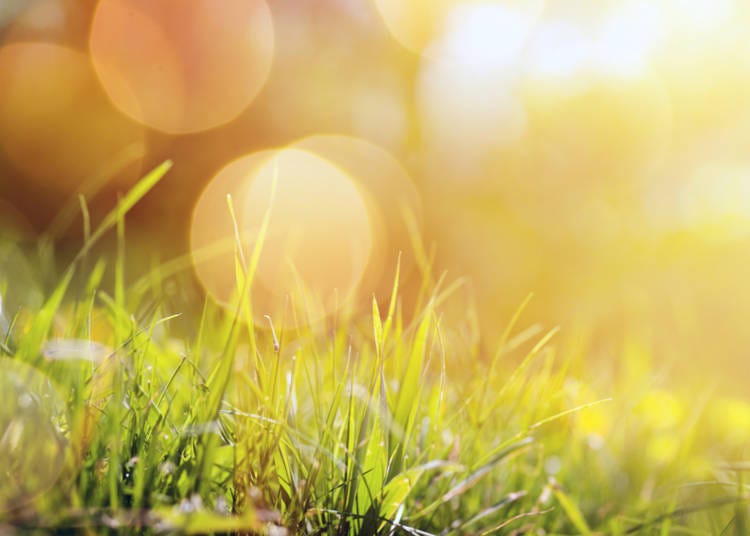
For most of us spring probably provides the most ideal temperature all year round (particularly in the country's lower lying reaches).
In Honshu, Shikoku and Kyushu the temperature tends to hover around the 15-25 degrees Celsius, particularly as April gets under way. The rainy season also doesn't start until June offering up some perfect picnic weather.
Hokkaido is much further north and as such, the wintry temperatures tend not to disappear until May. However, a by-product of its northern location means that it isn't subjected to the same levels of precipitation come June!
4. Hiking Season
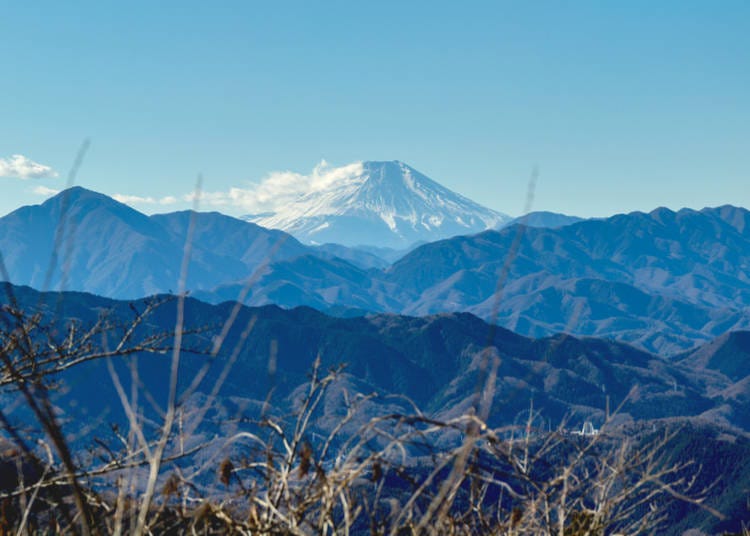
The temperate climate provides a nice segue into hiking season. Many of the country's larger mountains and steeper hiking trails are either off-limits or very dangerous in winter (and the beginning of spring). But once the snows thaw, they should be back in action in time for summer.
Mountains to the west of Tokyo like Takao and Miitake are very manageable hikes and provide some spectacular views on a fresh spring day. Mount Fuji's climbing season is typically in summer, although towards the end of spring eager climbers have been known to attempt summiting Japan's largest and most famous volcano.
Mount Moiwa in Hokkaido provides some great hiking trails that culminate in a stunning panoramic view of the Sapporo metropolis. The hike is suitable for people of all levels of experience and when you get to the top you'll be glad you made the effort.
5. Green Tea Plantations
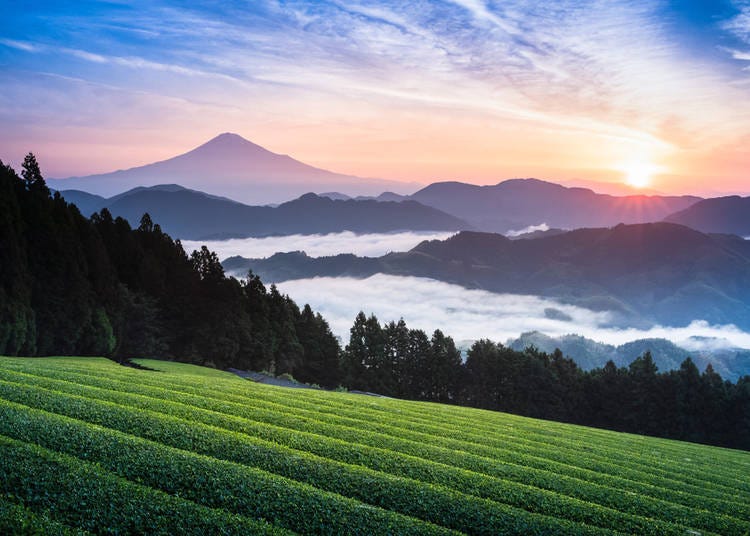
Green tea or "matcha" is one of the nation's favorite non-alcoholic beverages. Served both piping hot and icy cold, found in sushi bars and izakaya restaurants, baked into bread and churned into ice cream, used to flavor chocolate and as a seasoning for potato chips, the Japanese simply love it. While matcha is great to drink and eat, it also takes centre-stage in seasonal spring views. The plantations where the Camellia Sineses plant is cultivated into green tea are an Instagramer's dream as they proliferate into striking columns of rolling green country side.
Wazuka Tea farm in Kyoto is one of the most popular out west in Kansai. Closer to Tokyo, Imayima and Obuchi Sasaba in Shizuoka Prefecture (both of which are set against the backdrop of Mount Fuji) are equally impressive. Matcha picking season starts in May so we recommend visiting one of these sites in April (if possible) to get the most value from it.
6. Sakura-themed food
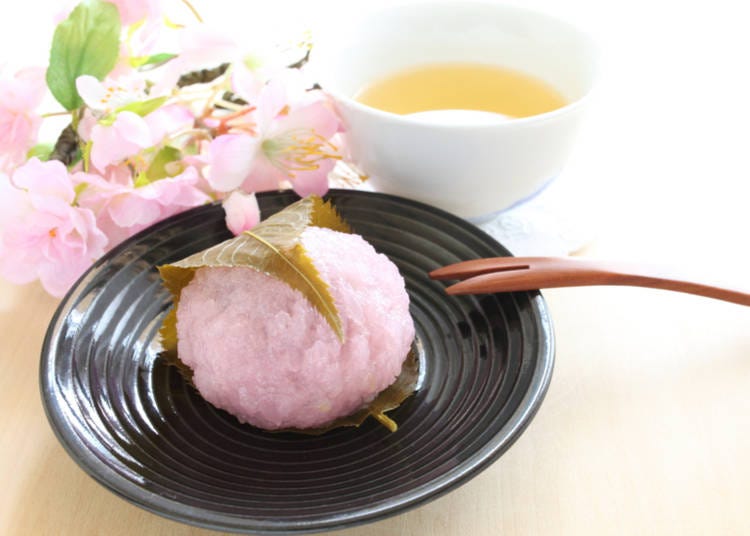
With the arrival of the cherry blossoms comes an eclectic assortment of sakura-themed food and drinks. Convenience store chains like 7-Eleven, Family Mart and Lawson will stock KitKat, ice creams and various other candies and sodas with a sakura-flavored twist.
Major coffee and fast food conglomerates will also get in on the act with cherry blossom coffee specials and even burger buns and French fries that have been imbued with the essence of Japan's favorite spring flower.
7. Strawberries

Spring in Japan means strawberry picking season has arrived once more! There's simply no better time to sample the nation's quintessential spring fruit. They are harvested from east to west and north to south—those in northern Honshu's Tochigi prefecture are regarded as the best of the lot. Don't plan on going there? Never fear, they are exported nationwide.
The strawberries in Japan come in all sorts of variations too, with eccentric English translations like "Red Cheeks", "Sweet King" and "The Scent of First Love". And depending on where you are, you may see them baked into tarts, dressing up a cake or bathing in a cocktail. Regardless of their shape, size or presentation we urge you to give them a try this spring!
8. Festival Season
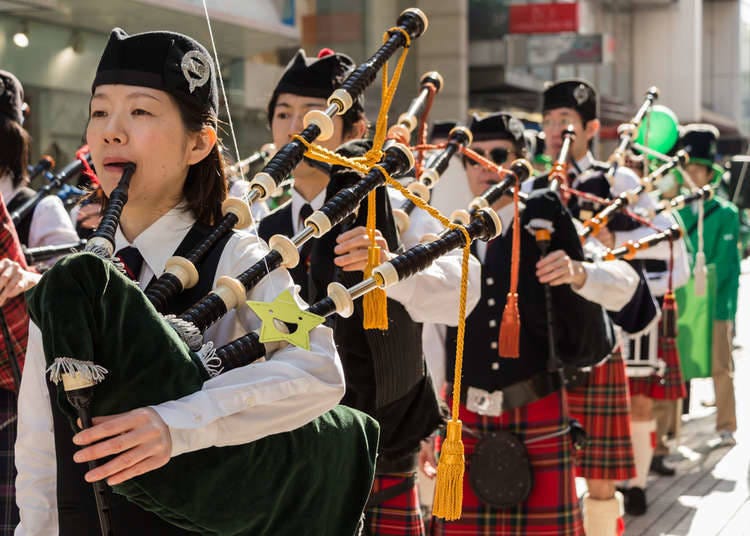
With the increase in temperature the outdoor festival season gets back into full swing. These include a variety of Shinto and Buddhist celebrations across Japan, cross-cultural fetes in Tokyo's Yoyogi Park—like the I Love Ireland Festival (around St Patrick's day on March 17th) or food and culture soirees from Japan's southeast Asian neighbours—the annual Rainbow Pride (usually last weekend in April) and even the Kanamara Festival in Kawasaki (early April) where male genitalia is the central theme. You name it and there's a Japanese festival dedicated towards it.
9. Spring Cuisine
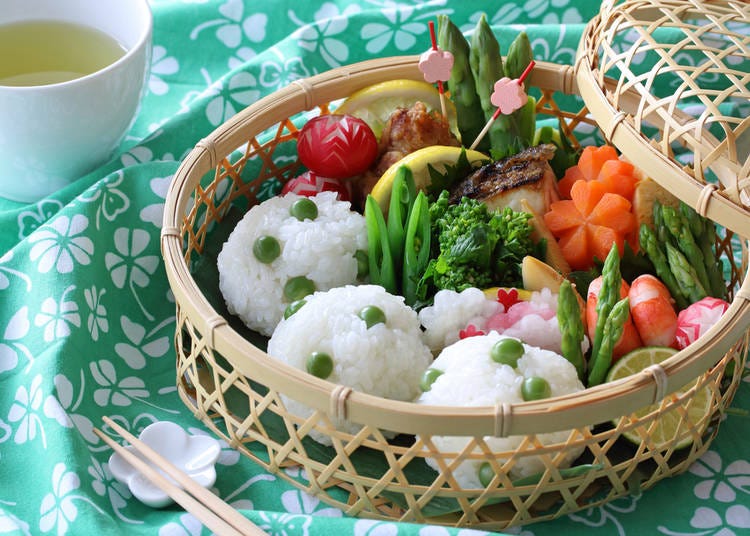
Like every other season, spring in Japan brings about a shift in local cuisine. Fresh fruit and vegetables from the year's new harvest including bamboo shoots (often found swimming in your ramen), a variety of seasonal weeds and seeds (often used for spring seasoning) and of course strawberries.
Seafood also sees a seasonal shift with clams, mussels and sardines at their best during this time of year. Toyosu (the world's largest fish market) in Tokyo is sure to have these aplenty come spring.
Lastly mochi (a sticky rice ball sweet) is another spring dessert that you will see sold everywhere from yokocho street food vendors to market stalls at the top of hiking trails and mountains. Dango is one of the most popular forms of mochi that appears in skewers of three differently colored balls. One white, one green, one pink representing the rice, the matcha and the sakura.
10. Golden Week
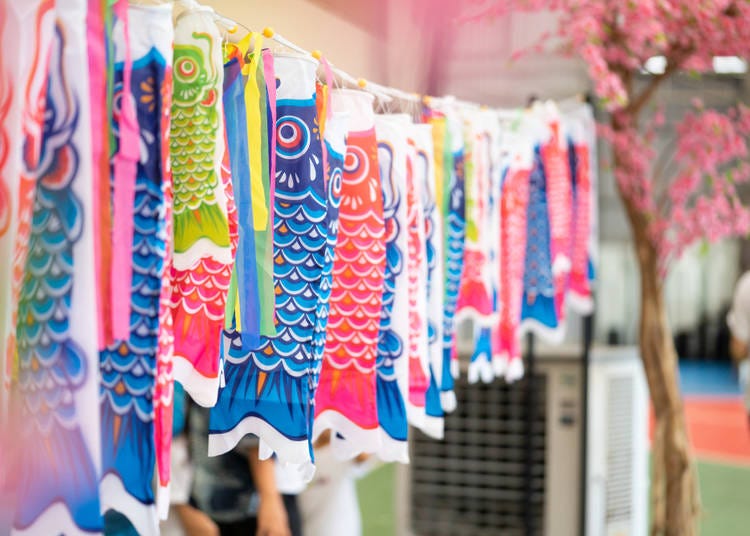
Beginning at the end of April and lasting through the first week in May, Golden Week is the annual string of spring national holidays that provide us expats with some much-needed rest and visitors with plenty of events and activities to take part in. From Kyokusui-no-en—a "stream party"—in Kyoto and the Hitaka Hibuse musical float festival in Iwate Prefecture to a Samurai festival in Yonezawa city and the Arita ceramics fair down in Kyushu, the land of the rising sun is bursting with entertainment from top to bottom during golden week.
Plus, it also provides a few opportunities to get into the museums, galleries, parks and gardens that you usually have to pay for, free of charge!
11. Spring Skiing in Japan!
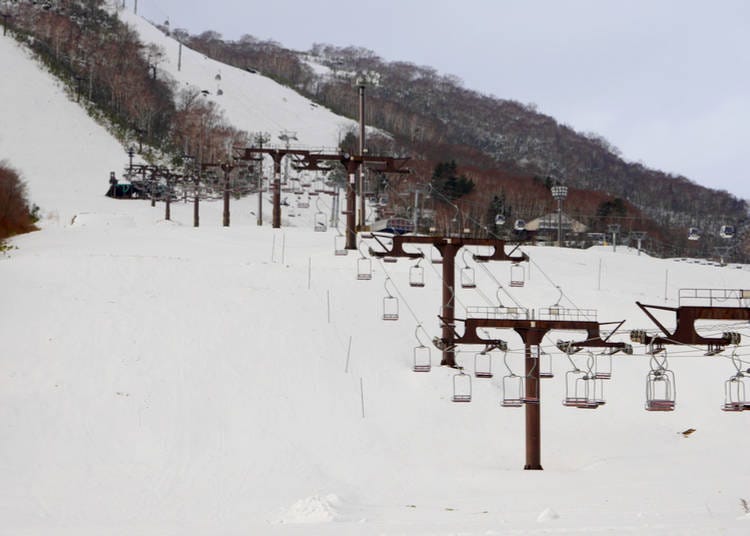
While winter is generally associated with the ski season, in some of the Japan's more northern reaches (particularly Hokkaido) there's still ample opportunity to hit the slopes on some of the world's best powder come spring.
Niseko has recently grown from a quiet little town hiding in the seemingly endless mountain ranges of Hokkaido, to one Japan's—if not the world's—finest ski resorts. With pillow-soft powder, a wide range of slopes and reputable off-piste skiing options, you'll be glad to know that ski season here lasts right the way through until early May.
Sapporo Kokusai ski resort lies just on the outskirts of the city by the same name and provides a great option for a short ski trip if you're staying in Sapporo city. While the available runs don't quite match up to the sheer class of Niseko's, it still has plenty to keep you occupied for a day or two of fun on the slopes. The season here will likewise run until early May.
12. Haru Ichiban

I don't want to talk about the Japanese spring weather ad nauseum but, haru ichiban just has to get a mention. This is the Japanese term (literally meaning "spring first") which describes the first warm spring wind of the year that blows up from the south. It will be announced officially by the local news and is a welcome return after the bitterly cold winds of winter.
13. Exploring (and Relaxing In) Japanese Parks
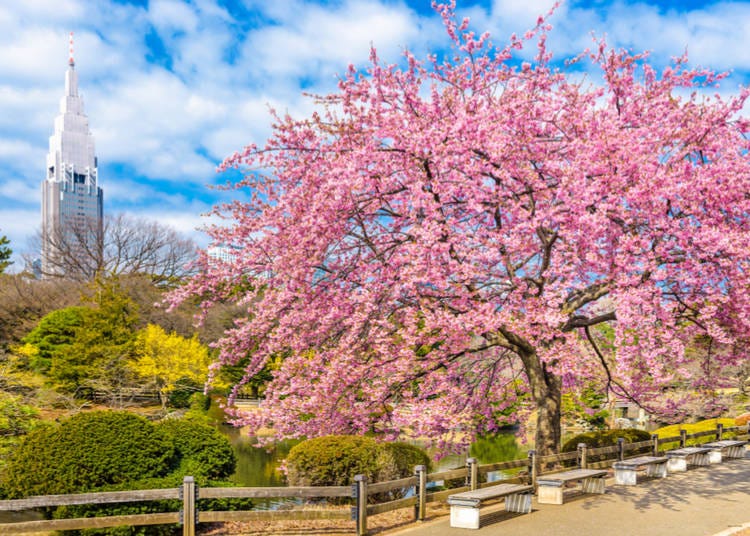
Japan has some great parks both within cities and much larger national parks located on their outskirts. The end of winter opens the door to enjoying these parks to the fullest before the blazing furnace of the Japanese summer rears its head.
Despite Tokyo's image as a concrete metropolis, there are literally dozens of large parks and green spaces peppered throughout the city (and that's before we've even mentioned the mid-sized and small ones). The aforementioned Yoyogi Park near Shibuya and Ueno Park in the north are two of the biggest and best around.
In Kyoto there is Murayama Park, famous for its cherry blossoms, Ohori Park in Fukuoka is spectacular with its traditional architecture and sprawling lake, in Osaka the parkland around the city's castle walls offer up a quaint walk through nature and in Sapporo, Odori Park provides a walkway to one of the best aerial views of the city.
Take a short sojourn from the urban to the rural and the parks in Japan only get better. The options are as varied as they are plentiful with a safari park in Gunma, the resting place of legendary samurai Tokugawa Ieyasu in Nikko, the tropical Kerama Shoto in Okinawa and the bear-infested Shiretoko National Park in Hokkaido to name but a few.
14. Enjoying beer and spirits from some of Japan's finest brewers

Japan is renowned for its expertise in the craft of making beer. Whether you’re "jonesing" for a Sapporo, craving an Asahi or chomping at the bit for a Yebisu, most convenience stores and supermarkets will have you covered. So kick back and relax on a fine spring day with one of Japan's local beers. Each spring, limited-edition labels are also released, each with sakura motifs – do have a look for these on the shelves too!
AND: Japanese sake season! Spring sake is fermented from November to March – making early spring the season for sake nouveau! If you can't see it on the menus in bars and restaurants, ask for "nihonshu" and enjoy.
15. Colorful spring clothing

That time of year when people ditch the dull jackets and dark overcoats so they can unleash their colorful spring wardrobes. The bright pastel colors of spring attire accompany the rising temperatures lending an aura of positivity to the Japanese spring. In a fitting representation of the season itself, it feels like things are starting anew! So why not indulge yourself?
David is a Northern Irish freelance writer living in Tokyo. He loves living in Japan, reading about Japan, writing about Japan and eating Japanese food. He also spends a lot of time exercising, playing rugby and risking a litany of muscle-related injuries in yoga class.
- Area
- Category
*Prices and options mentioned are subject to change.
*Unless stated otherwise, all prices include tax.
Popular Tours & Activitiess
Recommended places for you
-

The Tokyo Station Marunouchi Building
Landmarks
Tokyo Station
-

Senso-ji Temple
Temples
Asakusa
-

Ueno Zoo (Ueno Zoological Gardens)
Zoos, Aquariums & Botanical Gardens
Ueno
-

Ameyoko Shopping Street
Old Towns (Shitamachi)
Ueno
-

Shinjuku Gyoen National Garden
Gardens
Shinjuku
-

Shibuya Crossing
Downtown
Shibuya
-

Simply Oishii Wagashi School Discover Japanese Culture Through Wagashi: A Hands-On Experience!
by: Guest Contributor
-

A Travel Game Changer! Go Hands-Free Between Tokyo and Kyoto with LUGGAGE EXPRESS by JTB and JR Tokai
by: Guest Contributor
-

New Seibu L00 Series Launching in 2026! What to See Along the Tokyo-Area Golden Route
by: Guest Contributor
-

Tokyo City Pass Upgrade: Harry Potter Studio Tour & Top Sights up to 85% Off
by: Guest Contributor
-

The Best Japanese Food Representing 2025! 'Dish of the Year®' Annual Award Results Announced
-

How to Get Don Quijote's Exclusive 2025-2026 Winter Gift (+Tax-Free Savings)
Inspiration for Accommodations
-

Enjoy Mt. Fuji from the Comfort of Your Room! Recommended Ryokan with Mt. Fuji View
-

Stay Near the Cherry Blossoms! Hotels for Cherry Blossom Viewing in Tokyo
-

Family-Friendly Hotels with Free Shuttle to Disneyland: Convenient Access for a Magical Stay
-

Top Ranked Hakone Hotels with Mt. Fuji View: Enjoy Stunning Scenery from Your Private Space
-

Convenient Tokyo Hotels with Airport Shuttle: Ideal for Families and Heavy Luggage
-

Stunning Tokyo Tower View Hotels: Enjoy Spectacular Scenery from Your Private Space
-

Convenient Asakusa Hotels with Kitchens: Ideal for Extended Family Visits
-

Experience Luxury: Hakone's 10 Best Five-Star Accommodations
-

Enjoy Mt. Fuji Autumn Leaves! Top Hotels Near the Popular Autumn Leaves Corridor
-

Experience Hakone Fall Foliage from Your Room with Stunning Views
-

[2017] 10 Events in May You Don't Want to Miss
-

Tokyo Cherry Blossom Festival Season in Photos! (2019)
-

Yaezakura: Best Places To See Late-Blooming Cherry Trees Near Tokyo
by: Lucio Maurizi
-

Tokyo Train Map: Your Essential Guide to Subways and Railways
-

Autumn in Japan 2025: Fall Foliage Forecast & Where to Enjoy the Colorful Leaves (+Tour Info)
-

Japan's Bath Culture: Tips You Should Know!
- #best ramen tokyo
- #what to buy in ameyoko
- #what to bring to japan
- #new years in tokyo
- #best izakaya shinjuku
- #things to do tokyo
- #japanese nail trends
- #what to do in odaiba
- #onsen tattoo friendly tokyo
- #daiso
- #best sushi ginza
- #japanese convenience store snacks
- #best yakiniku shibuya
- #japanese fashion culture
- #best japanese soft drinks














